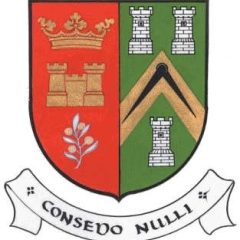HISTORIANS are often indebted to the records of guilds and societies in their search for the historical facts about the town or country in which they are interested.
Dalkeith, like all other towns of any importance, had its Trade Guilds, but the only one, which has survived the course of years is the Freemasons. According to the Statistical Account of Scotland, the Weavers were established in 1566, the Hammermen in 1694, Shoemakers in 1714, and the Freemasons in 1724. The antiquity of the latter Operative Lodge must, however, go back many years before this date, as reference to it is made in the records of the Melrose Lodge in 1681.
It is interesting to note that, till 1812, Operative Masons were admitted for 10s less than the others. Unfortunately, the earliest records of the Lodge are not available, but there is almost a complete list of the masters from 1736, the date of the constitution of the Grand Lodge of Scotland, at which Dalkeith was represented by William Stirling of Herbertshire, and the two Wardens, Alexander Neilson and Mungo Graham.
From 1764 to the present all the Minute Books are extant, and they record the names of many notable men of the town and neighbourhood who were identified with the activities of the Lodge. William Drummond of Hawthornden was Master in 1739, and Sir James Walker Drummond, Bart., who afterwards became Junior Grand Deacon, occupied the Chair from 1848 to 1853.The Lodge is indebted to the latter for the magnificent statue of St. Andrew which adorns the lodge room. In 1742, Sir Robert Dickson of Carberry was Master and Robert Dundas, Esq., of Arniston in 1864.
There is much interesting information in the Minutes of the habits and customs of former generations, and it is noteworthy that benevolence has been kept in the forefront of our principles.
